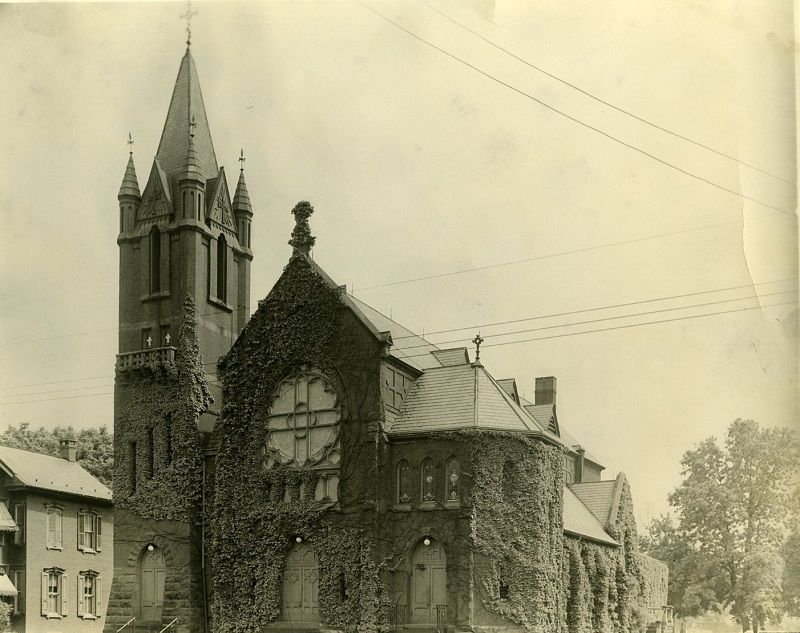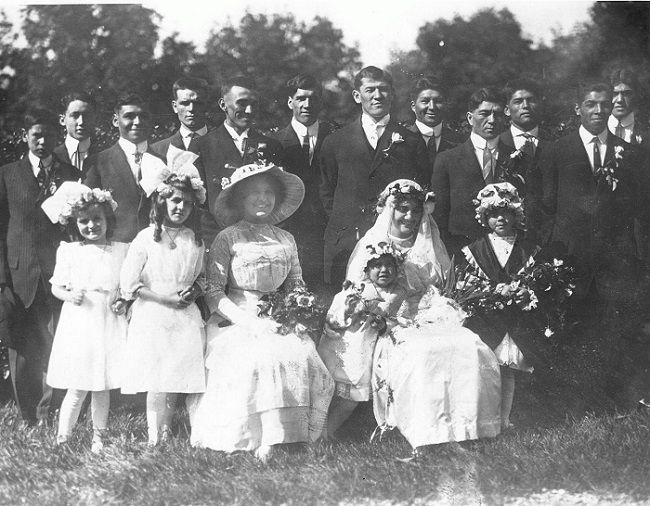This institution is unique in the fact that it has two physical structures in two different locations with the same name. The East Pomfret Street site, the Shrine Church is the original location for the catholic faith’s presence in Cumberland County. Since 1971, the Marsh Drive (South Middleton Township) location is where most of the church’s functions take place. It includes a large church, parochial school and an activities center.
From Pennsylvania’s founding in 1682, William Penn promoted religious freedom and ignored the English Penal Laws that required all inhabitants to attend the Church of England or pay excessive fines.1 As a result a small mission base was established in Heidelberg Township, Adams County, the Conewago Chapel, that sent priests throughout Central Pennsylvania. Most of the clergy from the mission belonged to the religious order Society of Jesus (Jesuits) and were accustomed to traveling hundreds of miles. One such priest was Charles Sewall (1744-1808) who purchased a lot in the second block of East Pomfret Street from Robert Guthrie, Junior in February, 1779.2 Charles was born on a plantation in St. Mary’s County, Maryland that his grandfather had settled on in 1661. The Sewall family was part of the British gentry and one of its ancestors had served as the Lord Mayor of Coventry, England.3
In 1784, a small wooden chapel was built next to the parish cemetery that was in use since 1779. A series of priests were sent from the Conewago Mission until 1820 when the Jesuits abandoned parish work and pursued in establishing academic schools and colleges.4 Thereafter priests were sent from the Philadelphia Diocese (established 1808) since the Harrisburg Diocese was not created until 1868.5 The new missionary circuit included: Carlisle, Harrisburg and York; many times mass was celebrated just once a month at each parish. Eventually the three missions adopted St. Patrick as their patron name. The early ethnicity of the small Carlisle parish was evenly divided between Germans and Irish. After the Civil War the parish became more diversified with the influx of immigrants from Southern Europe and the demand for industrial workers.
A brick church was built in1806, expanded in1825, occupying the site until 1858, when it was destroyed by fire. The brick church was rebuilt in 1859 and stood until 1893 when the current edifice was constructed. Fire struck again in 1923 and the church had to rebuild its interior structure when many of the wall paintings were completed.
Finally by 1877, St. Patrick's was granted permanent/self-supporting status from the Diocese of Harrisburg and this included a residential pastor.6 Three years latter arrived Henry Ganss as pastor. Over the years many self-sacrificing individuals had served the parish but Father Ganss was unique in the fact that he had a earned a doctorate degree in music, composed entire masses, wrote hymns, served on the government’s Indian Affairs board, on the Hamilton Library’s board, Todd Hospital board and taught music courses at the Carlisle Indian School. He also wrote the first and only history of the parish (1895) that included many footnotes stating his references which was unusual for historians of his time period. In 1896, Ganss encouraged Mother Drexel, a Philadelphia philanthropist and Mother Superior of the Sisters of the Blessed Sacrament, to build St Catharine’s Hall a school for Black and Native Indian children that was located on Pomfret Street next to the church. In the twenty-first century this structure serves as the rectory.


